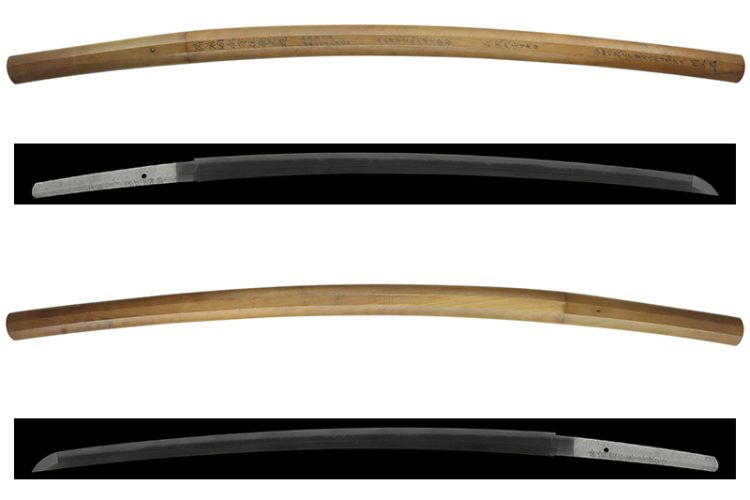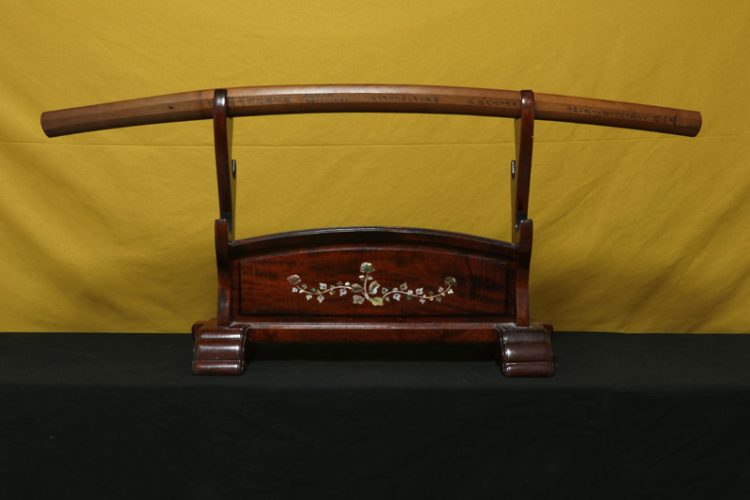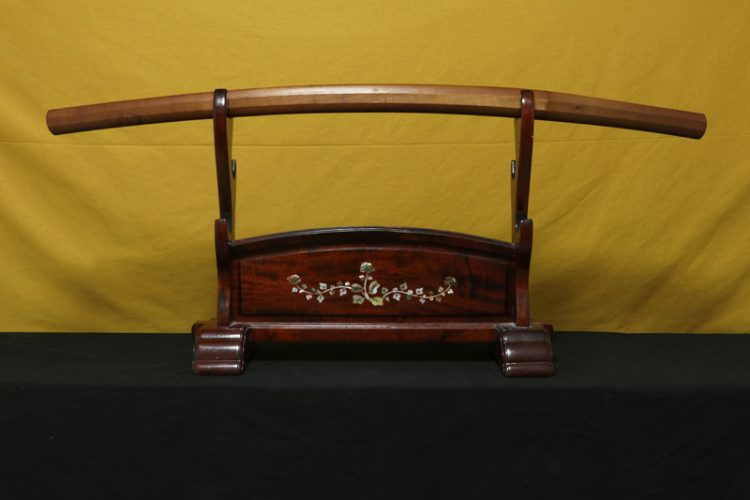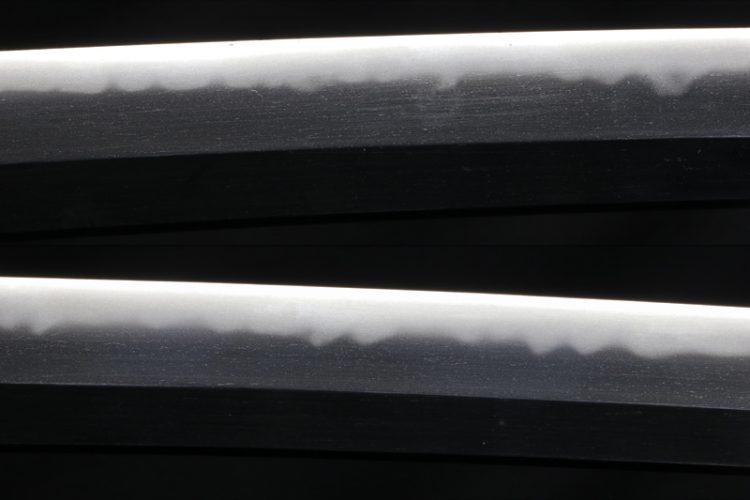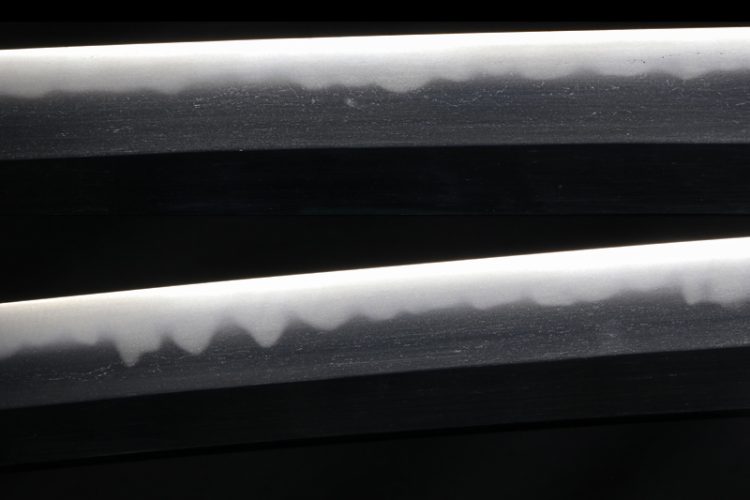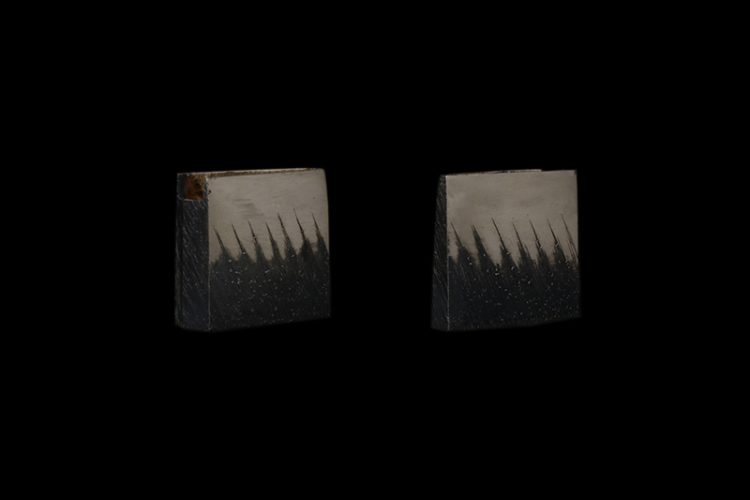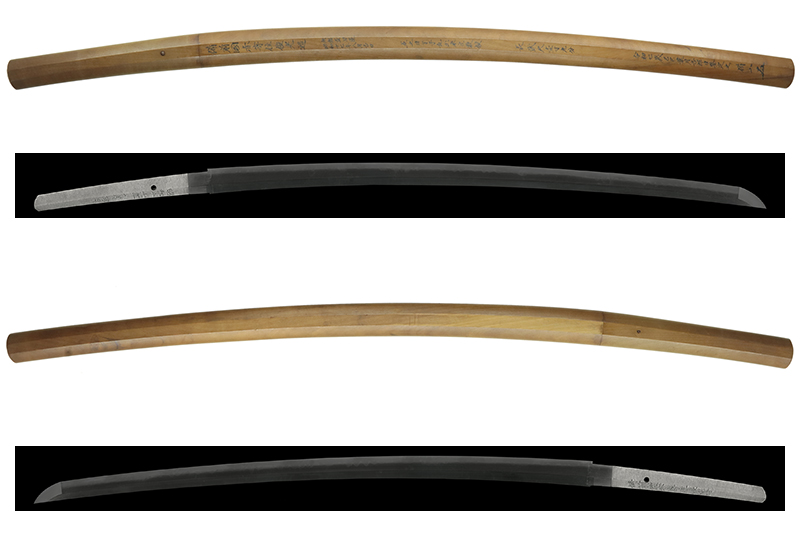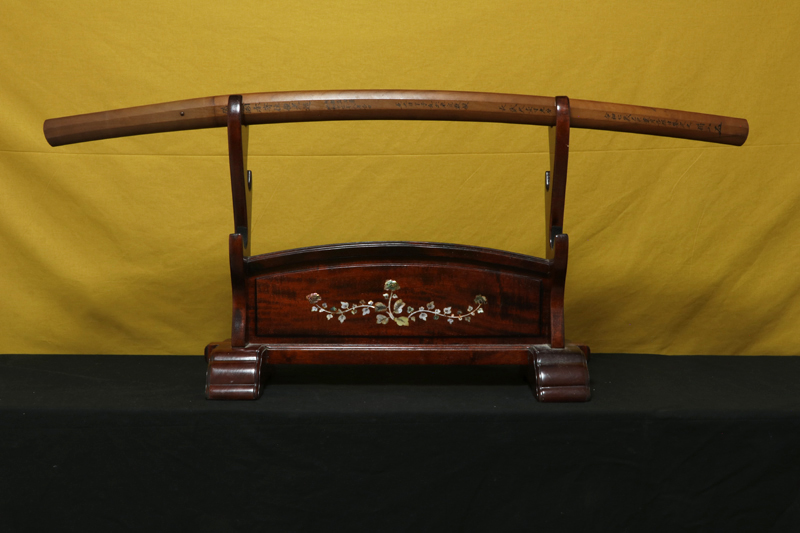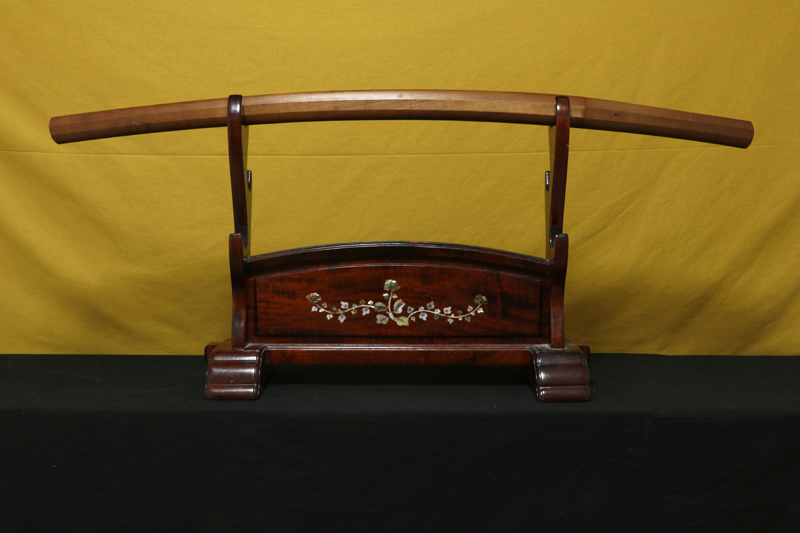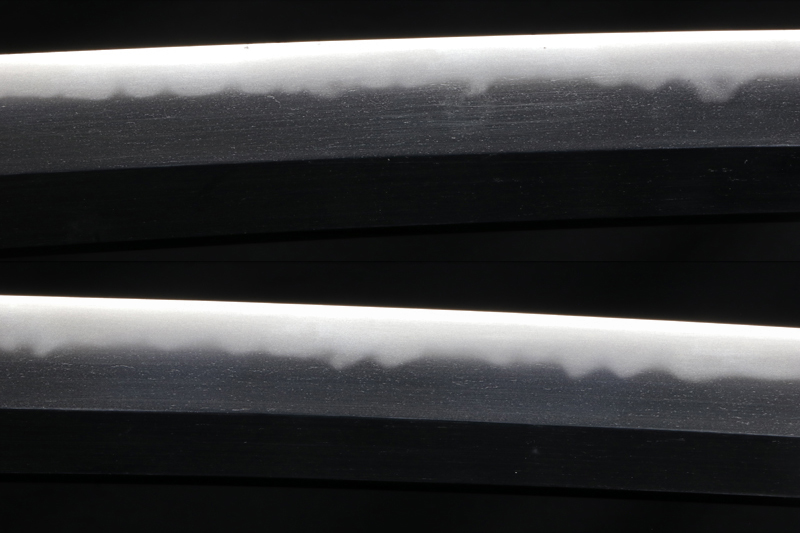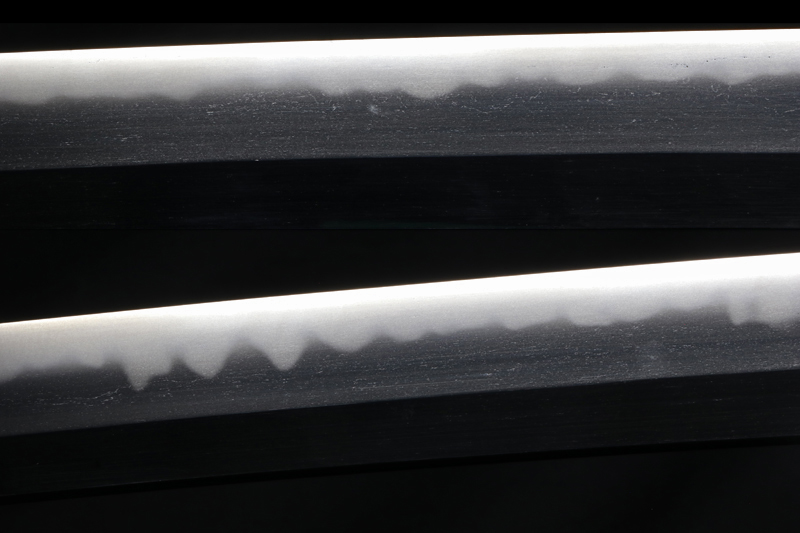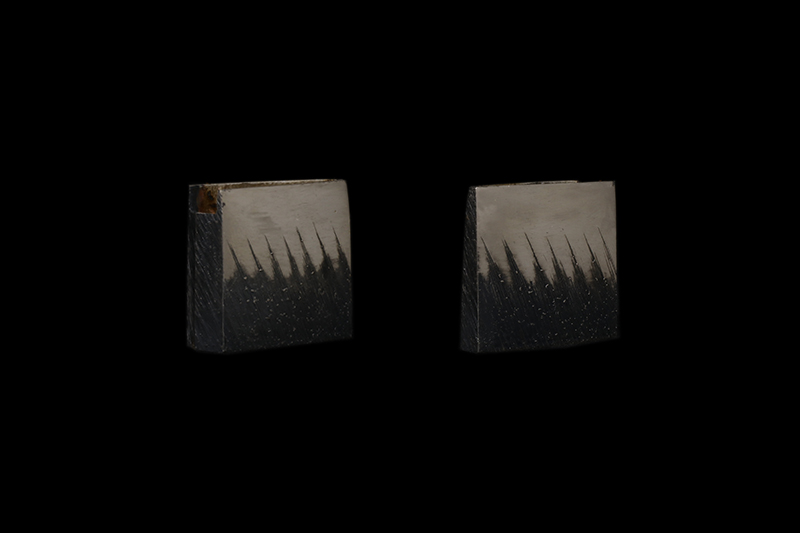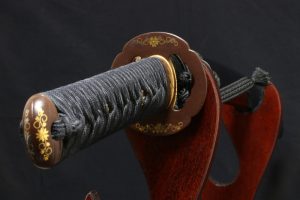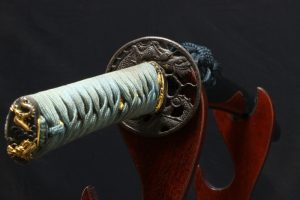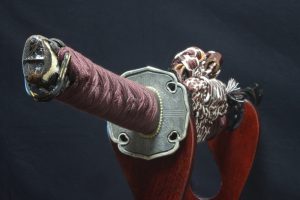説明
「刀姿 sword figure」
鎬造り庵棟、身幅重尋常、鳥居反り小鋒。茎は生で切鑢がかかる、茎尻は栗尻。
「地鉄 jigane」
地鉄は板目肌が流れ柾かかり、地沸付く。
「刃紋 hamon」
刃紋は互の目丁子刃、足良く入り尖り刃を交え飛び焼きを見せる。刃中は葉が入り金筋が働く。釯子は乱れ込み小丸に返る。
「特徴 detailed」
今泉俊光(本名:今泉濟〈いまいずみすすむ〉)は、明治31年(1898年)4月21日に佐賀県小城郡に生まれました。大正13年(1924年)に岡山県児島郡赤碕に移り、独自の鍛刀研究を始めました。昭和19年(1944年)に長船町へ移住し、昭和30年(1955年)には鍛錬場を開設。昭和34年(1959年)には岡山県重要無形文化財保持者に認定されました。その後、新作名刀展において日本美術刀剣保存協会会長賞や毎日新聞社賞など数多くの特賞を受賞し、昭和45年(1970年)には無鑑査に認定されました。
俊光刀匠は極めて長い作刀歴を持ち、平成5年(1993年)には96歳にして年紀と「九十六歳」の添銘を刻んだ太刀を製作しました。95歳のとき、自らの刀匠人生を「ただ自分が思うがままの刀造りの道であった」と述懐しており、平成7年(1995年)に97歳で逝去するまで、一途に作刀に打ち込み続けました。
「備前刀復興の祖」と称される俊光は、衰退していた備前長船刀の伝統を復興させた功績で知られています。岡山県瀬戸内市の備前長船刀剣博物館には「今泉俊光刀匠記念館」が併設され、その功績を称えるとともに、俊光が使用した鍛刀道具が展示されています。
本作は昭和17年(1942年)、俊光刀匠が44歳のとき、大戦初期に製作された一振りです。実戦に耐える切れ味と堅牢さに加え、美術的な美しさを兼ね備えています。
白鞘は良い風合いに日焼けしており、当時のオリジナルと考えられます。軍刀拵には収められていなかったと推測されます。
今泉俊光刀匠の作品が市場に出る事は稀、非常に貴重です。この機会にぜひコレクションに加えてください。
Imaizumi Toshimitsu, whose real name was Imaizumi Susumu, was born on April 21, 1898 (Meiji 31) in Ogi District, Saga Prefecture. In 1924 (Taisho 13), he moved to Akasaki in Kojima District, Okayama Prefecture, where he began independent research into sword forging. In 1944 (Showa 19), he relocated to Osafune Town, and in 1955 (Showa 30) he established his own forge there. In 1959 (Showa 34), he was designated as an Important Intangible Cultural Property Holder of Okayama Prefecture. He went on to receive numerous prestigious awards at the Shinsaku Meitō Exhibitions, including the NBTHK Chairman’s Prize and the Mainichi Newspaper Prize, and in 1970 (Showa 45) he was designated as Mukansa (exempt from examination).
Toshimitsu had an exceptionally long swordsmithing career. Remarkably, in 1993 (Heisei 5), at the age of 96, he produced a tachi bearing both a date and his age in the inscription. In his later years, at age 95, he reflected on his life as a swordsmith, saying, “It was simply a path of sword-making as I wished, nothing more.” He continued working with unwavering dedication until his passing in 1995 (Heisei 7) at the age of 97.
Renowned as the “Restorer of Bizen Swords,” Toshimitsu is credited with reviving the declining Osafune Bizen tradition. The Bizen Osafune Japanese Sword Museum in Setouchi City, Okayama Prefecture, includes the Imaizumi Toshimitsu Memorial Hall, which honors his achievements and displays the tools he used in sword forging.
This piece was forged in 1942 (Showa 17), at the age of 44, during the early years of the war. It is a sword that embodies not only the sharpness and durability required for actual combat, but also artistic beauty.
The shirasaya has aged with a fine natural patina, suggesting that it is the original one from the period, and it is unlikely that this sword was mounted in a military koshirae.
It is rare for works by swordsmith Imaizumi Toshimitsu to appear on the market, making them extremely valuable. Do not miss this opportunity to add one to your collection.
「拵 Koshirae」
ハバキ(habaki) :銀無垢一重の腰祐乗。
鞘(saya) :白鞘。
「刀剣の状態 condition of blade」
研:良好です。
傷:欠点に成るような傷は有りません。
